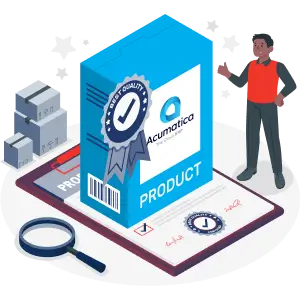In today’s manufacturing sector, the competition is relentless, and the drive for efficiency, cost reduction, and sustainability is stronger than ever. Businesses are navigating a landscape filled with challenges that demand quick adaptation to market shifts, a keen focus on operational efficiency, and a persistent quest for innovation.
Digital transformation in manufacturing has transitioned from a forward-thinking strategy to an essential element of survival and competitive edge. Central to this transformation is the adoption of sophisticated ERP systems that offer comprehensive solutions for streamlining operations, enhancing strategic decision-making, and elevating customer satisfaction.

Among these solutions, Acumatica ERP stands out as a pivotal tool for manufacturers aiming to refine their processes and set the stage for ongoing innovation. Acumatica ERP provides a dynamic and adaptable platform specifically designed for the manufacturing industry's complexities.
Manufacturers, this guide has been specifically tailored to provide you with an overview of manufacturing ERP features and offer advice on how to connect ERP applications with innovative manufacturing technologies. Furthermore, it includes a self-assessment tool that can help you determine the next steps in implementing technology strategies to set up a future-proof platform for growth.
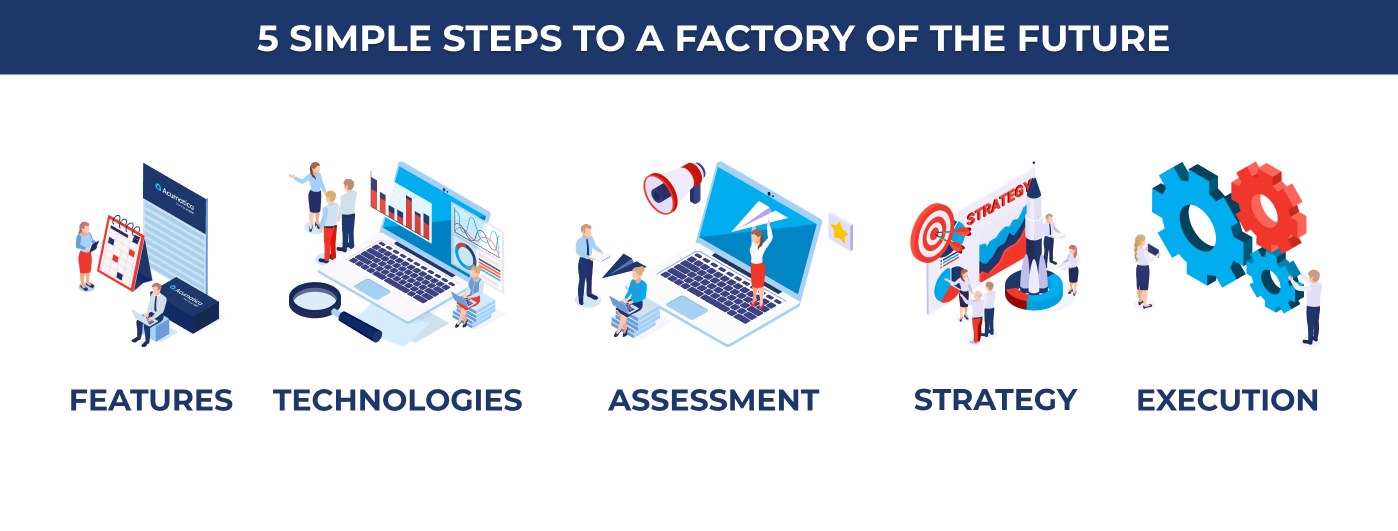
Features
Introduction to Manufacturing ERP
The backbone of a modern manufacturing operation, an Enterprise Resource Planning (ERP) system, integrates various facets of production and business processes into a cohesive platform. This integration facilitates efficient operations, from the shop floor to customer delivery, and provides a bird's eye view for strategic decision-making. Let's delve into the key features that make ERP systems indispensable for today's manufacturers.
General Features
A robust ERP system for manufacturing is characterized by its comprehensive suite of general features. It's built on a foundation that supports modern programming languages and database technologies, offering deployment flexibility—cloud-based or on-premise. Security is paramount, with multiple layers protecting access to the system and data. Additionally, customizable workflows, real-time inventory updates, and unit-of-measure conversions exemplify the system's adaptability to various operational needs.
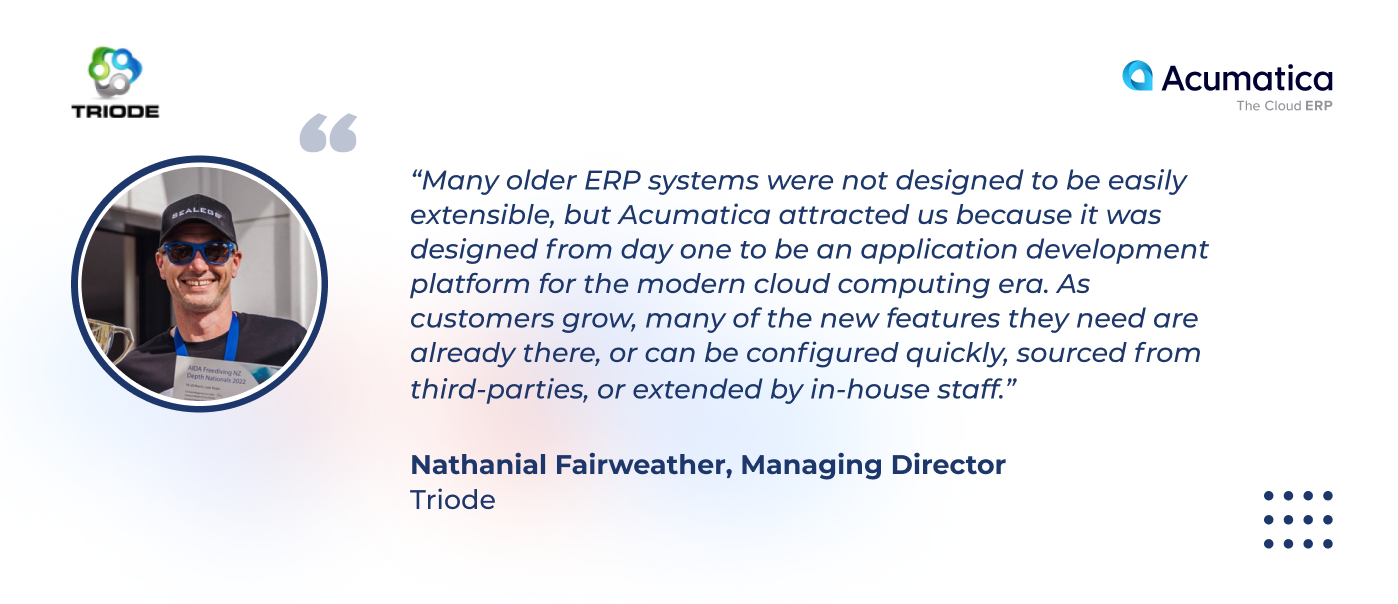
Accounting
Accounting in a manufacturing ERP system transcends traditional bookkeeping. It is designed to accommodate the complexities of global trade, including support for multiple currencies and adherence to various accounting standards such as GAAP and IFRS. The suite typically encompasses general ledger, accounts payable and receivable, cash management, and more, all streamlined through automation for efficiency and accuracy.
Order Management
Order management within an ERP system is far-reaching, covering sales, procurement, and inventory to ensure that customer demands are met promptly and accurately. Features include integrated CRM, native connections to e-commerce platforms, and sophisticated pricing, promotions, and discount management. The aim is to optimize the sales cycle from order to delivery, enhancing customer satisfaction and loyalty.
Inventory Management
Effective inventory management is crucial in manufacturing, and ERP systems offer advanced tools for real-time tracking of materials and finished goods. Capabilities include barcode scanning, warehouse management, and detailed tracking of lots and expiration dates, ensuring optimal stock levels, reducing carrying costs, and improving delivery performance.

Product Design
ERP systems support product innovation through integration with computer-aided design (CAD) and product lifecycle management (PLM) applications. This facilitates seamless collaboration between engineering and manufacturing, ensuring that product designs are efficiently translated into manufacturable products while maintaining compliance and managing changes.
Production Management
The production management features of an ERP system provide detailed visibility into manufacturing operations. Tools for scheduling, job costing, and tracking production activities enable manufacturers to optimize their production processes, ensuring resources are used efficiently and products are made to specification.
Planning and Scheduling
Advanced scheduling algorithms and demand forecasting tools help manufacturers align material plans with production schedules. The goal is to ensure timely procurement of materials, optimal inventory levels, and efficient use of manufacturing resources, all contributing to a smoother production flow and timely order fulfillment.

Analytics and Reporting
Data is a gold mine for manufacturers, and ERP systems come equipped with powerful analytics and reporting tools. These features allow businesses to dissect data across operations, offering insights into efficiencies, costs, and opportunities for improvement. Integration with tools like Microsoft Power BI further enhances the ability to visualize data and make informed decisions.
In sum, the comprehensive features of a manufacturing ERP system like Acumatica are designed not just to manage the complexities of modern manufacturing but to drive businesses forward. Through automation, integration, and insights, manufacturers are equipped to meet the demands of today's market and anticipate the challenges of tomorrow.
Technologies
Manufacturing Technologies
The landscape of manufacturing technologies is diverse and ever-evolving, reflecting the industry's push towards more efficient, agile, and smart operations. Let's explore some of the key technologies reshaping modern manufacturing.
WMS, BARCODES, RFID, & IIOT
Warehouse Management Systems (WMS), barcodes, RFID tags, and the Industrial Internet of Things (IIoT) are crucial for inventory accuracy and real-time tracking. These technologies work together to streamline warehouse operations, enhance product traceability, and optimize logistics, significantly reducing manual errors and operational costs.
🔹 Acumatica integrates these technologies into its ERP system, offering advanced inventory tracking and warehouse management capabilities that enhance operational efficiency.
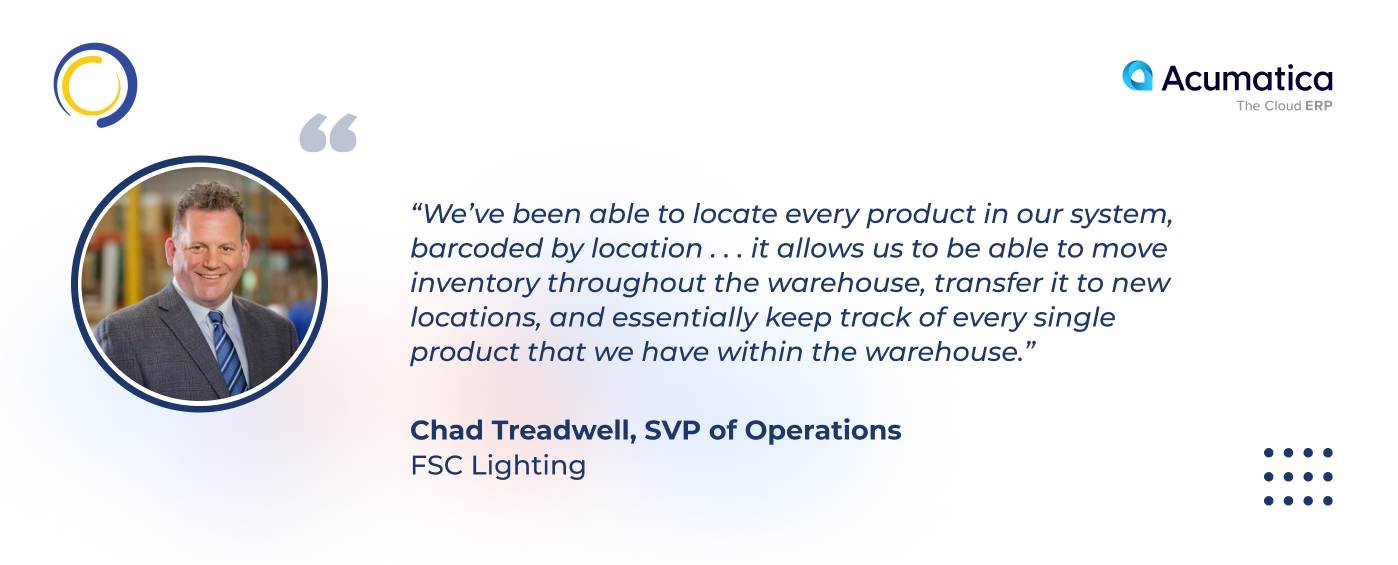
CAD & PLM APPLICATIONS
Computer-Aided Design (CAD) and Product Lifecycle Management (PLM) applications are vital for the design and development of new products. By integrating these tools with ERP systems, manufacturers can ensure that product designs are seamlessly translated into manufacturable items, fostering innovation and reducing time-to-market.
🔹 Acumatica for Arena Native Connector and marketplace applications for CAD integration reduce the engineering to manufacturing hand-off and shorten design cycles and production times.
ROBOTICS, SCADA, PLC, & M2M
Robotics, Supervisory Control and Data Acquisition (SCADA) systems, Programmable Logic Controllers (PLC), and Machine-to-Machine (M2M) communication exemplify the automation and control technologies driving manufacturing efficiency. These systems enhance precision, speed, and reliability across production processes.
🔹 The Acumatica Device Hub, Open APIs, and no-code / low-code integration simplify machine and device connectivity.
MOBILE & WEARABLE TECHNOLOGY
The adoption of mobile and wearable technologies in manufacturing enhances flexibility and accessibility. These technologies empower employees and streamline operations, from wearable devices that improve worker safety to mobile apps that enable remote monitoring and control.
🔹 Acumatica provides mobility to access every system process and data anytime, anywhere, on any device through secured connections and mobile apps.
CLOUD COMPUTING & BIG DATA
Cloud computing and big data analytics are transforming how manufacturers process and leverage data. These technologies provide scalable resources for data storage and analysis, offering insights that drive better decision-making and operational efficiencies.
🔹 Acumatica is the fastest-growing cloud-native ERP application for midmarket manufacturers. Flexible reporting tools, robust inquiries, role-based dashboards, and native Microsoft Power BI connectivity provide everything manufacturers need to gain new insights into every facet of their operations.

VIRTUAL & AUGMENTED REALITY (VR/AR)
VR and AR technologies are redefining training and operational procedures in manufacturing. From virtual training environments that reduce onboarding times to AR overlays that assist with maintenance and assembly, these tools enhance learning and operational accuracy.
🔹 Start by documenting operational procedures with multimedia videos in Acumatica wikis. Acumatica is the ideal platform for future VR/AR automation projects.
ADDITIVE MANUFACTURING (3D PRINTING)
Additive manufacturing, or 3D printing, offers unprecedented flexibility in production, enabling manufacturers to create complex geometries and custom parts with reduced material waste and shorter lead times.
🔹 Manage 3D printers as work centers in Acumatica Production Management and connect with printers via Open APIs to capture production information.
CONNECTIVITY, CUSTOMIZATION, & TOOLS
The modern manufacturing environment demands connectivity and customization options. ERP systems need to offer open APIs and flexible toolsets that allow manufacturers to tailor solutions to their specific operational needs, ensuring seamless integration with other technologies and platforms.
🔹 Acumatica provides the most comprehensive application suite available for midmarket manufacturers. Tailor the system with more than 100 specialized applications from the Acumatica Marketplace and leverage technology experts from the world’s best partner channel to easily build out additional capabilities.
AI, ML, & VIRTUAL ASSISTANTS
Artificial Intelligence (AI), Machine Learning (ML), and virtual assistants are streamlining complex decision-making processes. From predictive maintenance to demand forecasting, these technologies automate insights, improving operational efficiency and reducing downtime. AI with
🔹 ML is built into the Acumatica platform for expense management, accounts payable automation, and other processes. Access the platform for additional AI and ML automation.
Learn more about our chat GPT integration with Acumatica. We showcase how you can speed up the data analysis process in your Acumatica ERP to provide your customers with quick and personalized replies.
CYBERSECURITY WITH BLOCKCHAIN
As manufacturers embrace digital technologies, the importance of cybersecurity grows. Blockchain technology offers a secure, transparent method for tracking transactions and maintaining data integrity across the supply chain.
🔹 Acumatica, Amazon Web Services, and Microsoft enforce multiple levels of application and database security with antivirus applications and a robust intrusion detection system (IDS) to identify any attempt to compromise the confidentiality, integrity, or availability of your data, or to circumvent security controls.

CMMS FOR PREVENTATIVE MAINTENANCE
Computerized Maintenance Management Systems (CMMS) are essential for scheduling and tracking maintenance activities. These systems ensure equipment is operating efficiently, reducing unexpected downtime and extending asset lifespans.
🔹 Identify slow times for planned maintenance of machines and tooling. Block out dates and times for maintenance activities. Specialized maintenance applications are available from the Acumatica Marketplace.
QUALITY MANAGEMENT SYSTEMS (QMS)
QMS tools are integral for maintaining high standards of product quality and compliance with industry regulations. They provide frameworks for documenting processes, procedures, and responsibilities for achieving quality objectives and policies.
🔹 Gain deeper insights into product quality with native Acumatica manufacturing reports and inquiries. Advanced QMS is available through connected marketplace applications for non-conformance, quality testing, and other activities.

MANUFACTURING EXECUTION SYSTEMS (MES)
MES technology bridges the gap between the shop floor and top-floor management, offering real-time data on production activities. This visibility enables manufacturers to adjust operations quickly in response to changes in demand or production issues.
🔹 Acumatica’s Manufacturing Data Collection (MDC) application provides light MES features to clock-in and off production orders with material transactions from mobile devices. Advanced MES apps are available from marketplace vendors.
COLLABORATION & SELF-SERVICE PORTALS
Finally, collaboration and self-service portals foster better communication and engagement with customers and suppliers. These platforms facilitate order tracking, inventory checks, and direct feedback, enhancing transparency and relationships across the supply chain.
🔹 Tailor the Acumatica Customer Portal to provide access to accounting and order information. Acumatica’s unique user licensing enables you to setup customers with secure access online.
By leveraging these advanced technologies, manufacturers can optimize their operations, innovate more rapidly, and remain competitive in a rapidly changing industry landscape.
Assessment
Your Digital Transformation Journey
Embarking on a digital transformation journey is a critical step for manufacturers aiming to stay ahead in a competitive and ever-changing industry landscape. The process begins with a comprehensive evaluation of your current operational state and an assessment of how prepared your organization is to implement new technologies. This foundational assessment is crucial for setting the stage for a successful transformation.
CURRENT STATE SURVEY
Complete the survey below by clicking the boxes in each column. Then, count your results and enter the total at the bottom.

CURRENT STATE ASSESSMENT RESULTS
Add up all the true answers. Use the table below to see where you are at today.

The automation strategies that you implement in your factory depend on the stage of your digital transformation journey. If you are only starting, you may have a few automated processes that use basic technologies. But, if you are further along in your journey, you will have more automated processes that use progressively more advanced technologies. Before developing a digital transformation plan, you must first understand where you currently stand. You can use the diagram below to chart your journey.
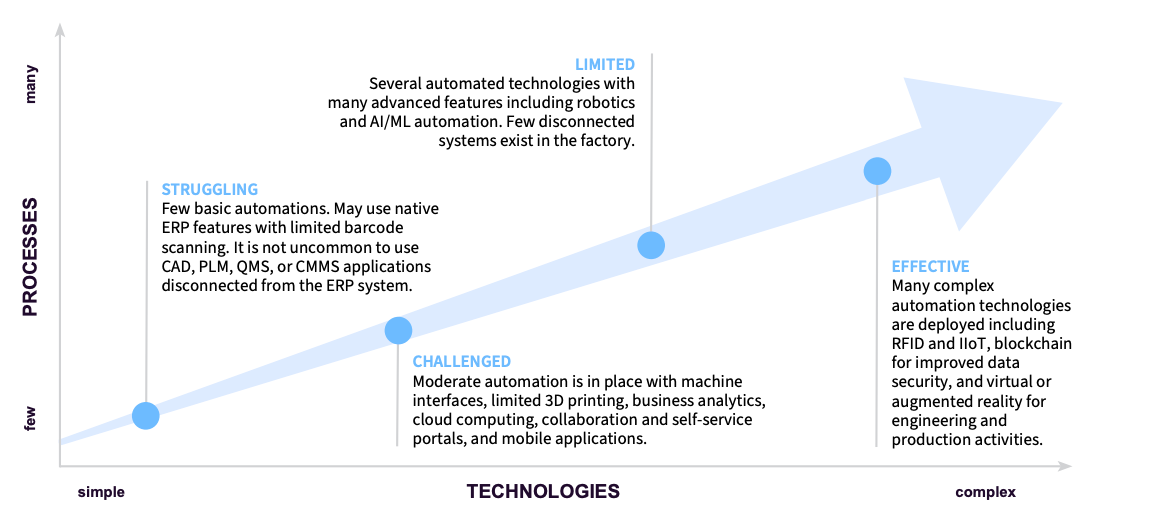
Source: Acumatica
Strategy
Crafting a comprehensive strategy is essential for navigating the complexities of digital transformation in manufacturing. This strategy should be meticulously planned, laying a strong foundation, conducting thorough research, setting priorities, and finally, developing a detailed execution plan. Each step is a building block towards achieving a technologically advanced manufacturing operation.
STEP 1: FOUNDATION
Review Current ERP Software Features:
The journey begins with a deep dive into your existing ERP software's capabilities. It’s crucial to assess whether your current system aligns with your digital transformation goals. Ask yourself and your team:
🔹Does your current business system provide a modern platform with an open architecture to connect to modern manufacturing applications and technologies?
🔹 Are there modules available that you can purchase to improve factory operations?
🔹 Are there features you could implement to improve business processes?
Upgrade or Replace ERP Systems:
Based on your review, decide whether upgrading your current ERP system or replacing it with a more advanced solution like Acumatica ERP is the best course of action. This decision hinges on the ability of the ERP to adapt to future challenges and scale with your business.
STEP 2: RESEARCH
1. Research Existing Capabilities:
Identify the strengths and limitations of your current technological setup. Understand how these capabilities match up against industry benchmarks and where there’s room for improvement. Document manufacturing capabilities available in your current (or potential replacement) ERP system.
2. Identify Modernization Initiatives:
Pinpoint specific areas within your manufacturing process that could benefit from modernization. This could range from automating manual processes to adopting new technologies like IoT or AI.
3. Review Potential Technologies:
Investigate technologies that could address the gaps identified in your current system. Schedule custom demonstrations with an ERP vendor. Ask them about:
🔹 available modules, features, or third-party applications to improve manufacturing operations;
🔹 whether these applications and features fill most of your current and future gaps;
🔹 whether they are easily connected; what the costs are.

STEP 3: PRIORITIZE
1. Improve Existing Manufacturing Processes:
Determine which processes can be optimized with minimal disruption to current operations. Focus on quick wins that deliver measurable improvements in efficiency and productivity.
2. Implement New Manufacturing Processes:
Creating a modern factory takes time. So do not try to do everything at once. Instead, consider activities that can be implemented quickly using existing functionality or where you can leverage previous investments in technologies for adjacent innovations.
STEP 4: DEVELOP A PLAN
1. Goals & Desired Outcomes:
Clearly define what you aim to achieve through your digital transformation efforts. These goals should be specific, measurable, achievable, relevant, and time-bound (SMART).
2. Factory Automation Technologies:
Document which technologies will be used, dependencies, connection points with other systems, known limitations, and provide contacts for assistance.
3. Timeline:
Develop a realistic timeline for your digital transformation initiatives. Break down the process into manageable phases, assigning deadlines for each milestone.
4. Contingency Plans:
Anticipate potential challenges and obstacles that could derail your transformation efforts. Establish contingency plans to address these issues promptly, ensuring minimal impact on your overall strategy.
By methodically working through these steps, manufacturers can construct a tailored strategy that aligns with their unique operational needs and future aspirations. This strategic approach ensures that the move towards digital transformation is not just a leap into the unknown but a calculated step towards securing a competitive edge in the manufacturing sector.
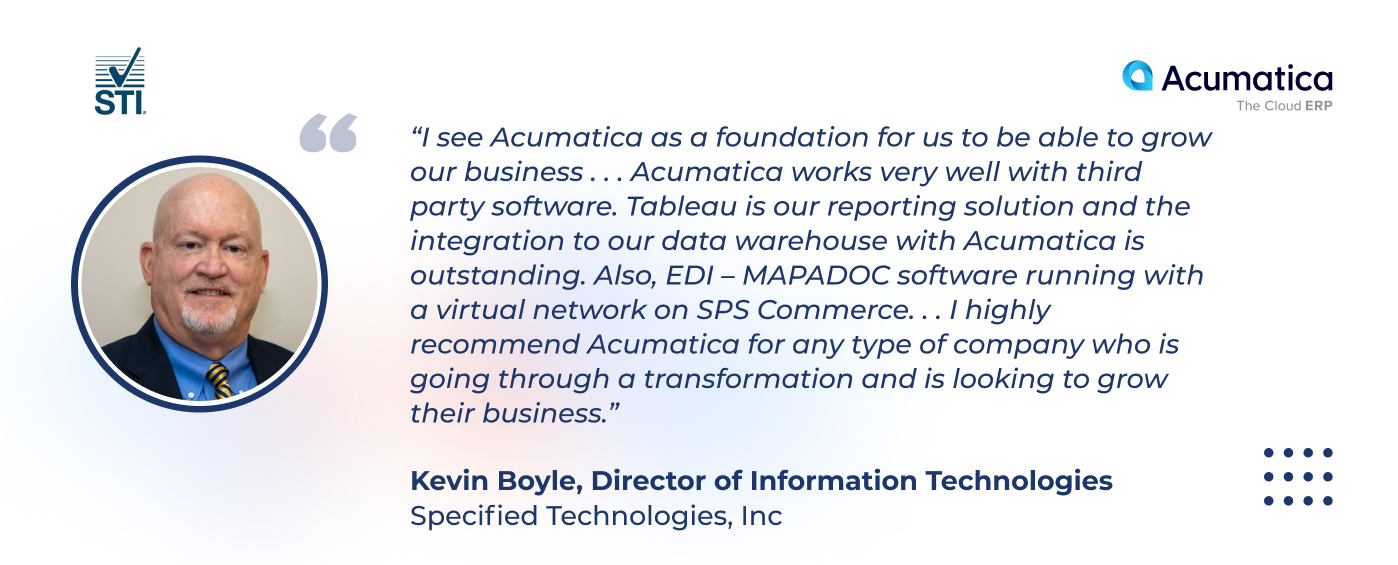
Execution
Successfully executing a digital transformation strategy involves meticulous planning, coordination, and an ongoing commitment to refinement and improvement. This execution phase is divided into four key areas, each critical to the successful adoption and optimization of new technologies within manufacturing operations.
PHASE ONE: PREPARATION
1. Plan Review:
Begin with a comprehensive review of your digital transformation plan. This step ensures that all elements of the strategy align with your business objectives and operational requirements. Verify that your roadmap is clear, feasible, and includes defined metrics for success. Consider the contingency plan to ensure there is a process in case something goes wrong
2. Team Preparation:
Equally important is preparing your team for the changes ahead. This involves training sessions, discussions, and demonstrations to ensure everyone understands their role in the implementation process. A well-prepared team is crucial for a smooth transition to new systems and processes. Notify participants of timelines and their roles and responsibilities. A conference room pilot (CRP) improves success rates dramatically.

PHASE TWO: GO-LIVE DAY
1. Coordination:
On the day your new ERP system goes live, effective coordination is paramount. A central project manager should oversee the operation, ensuring all teams are synchronized and any last-minute adjustments are managed efficiently. This coordination minimizes disruptions to ongoing operations.
2. Documentation:
Careful documentation of the go-live process is essential. Record any issues encountered and how they were resolved, along with any deviations from the planned implementation. This documentation will be invaluable for post-go-live review and future projects.
PHASE THREE: REVIEW
1. Go-Live Notes:
Review the notes taken during the go-live phase. This review should identify areas for immediate improvement and highlight any processes that did not transition as smoothly as anticipated.
2. User Feedback:
Gather feedback from users across all departments. Understanding their experiences, challenges, and suggestions for improvement is crucial for optimizing the new system and processes.
3. Analytics:
Analyze the data generated during and after the go-live phase. This analysis should focus on performance metrics, system efficiency, and any areas where the new ERP system is not meeting expected outcomes.
Ask yourself and your team:
🔹 Were you able to meet or exceed your goals? If not, why?
🔹 What can you do to improve the process?
Make sure to continue monitoring results long after each new process improvement project.

PHASE FOUR: CONTINUOUS IMPROVEMENT
1. Maintain Technologies:
Technology and business needs evolve, so it's important to keep your systems up-to-date. Regular updates and maintenance ensure your ERP system continues to meet your operational needs effectively. Set up a sandbox for testing upgrades. Review product road maps and understand technology lifecycles.
2. Improve Processes:
Based on the review phase and ongoing analytics, continuously seek ways to refine and improve your processes. This might involve adjusting workflows, enhancing training programs, or further customizing your ERP system.
3. Explore New Opportunities:
Stay open to adopting new technologies and methodologies that can further enhance your manufacturing operations. The digital transformation journey doesn't end with the implementation of an ERP system; it's an ongoing process of adaptation and improvement.
Executing a digital transformation strategy requires a structured approach, with a focus on thorough preparation, effective implementation, careful review, and continuous improvement. By adhering to these phases, manufacturers can ensure their transition to modern ERP systems like Acumatica is successful, supporting their growth and innovation goals well into the future.
Embrace Digital Transformation with Acumatica Manufacturing Edition
Navigating the digital economy is paramount for manufacturers aiming to secure their place in the market. Yet, the challenge of outdated ERP systems and basic software solutions can stifle growth, leading to unnecessary expenditures on customizations and complex integrations.
The key to overcoming these obstacles lies in leveraging cutting-edge technologies that automate processes to enhance quality, boost production speed, drive sales, reduce costs, and ultimately, elevate profits. Implementing a structured strategy is vital to achieving success in digital transformation. This approach begins with establishing a robust foundation, conducting comprehensive research, and setting clear priorities for your modernization efforts. Moreover, adopting a phased execution plan is essential for ensuring the seamless implementation of systems and processes.
Acumatica Manufacturing Edition caters specifically to the needs of make-to-stock, make-to-order, batch process, and project-centric manufacturing operations. With a comprehensive suite of interconnected applications for production, estimating, engineering, material planning, scheduling, and product configuration, Acumatica stands out as a premier solution for manufacturers.

Offering a top-tier business and industry management platform, Acumatica is engineered to support manufacturers in thriving within the digital landscape. Its future-proof foundation, open architecture, swift integration capabilities, scalability, and user-friendly experience make Acumatica an unmatched ally for manufacturers ready to transform their operations and excel in the digital age.
How We Support Manufacturers with Acumatica Cloud ERP:
Customized Implementation: At AcuPower, we don’t believe in one-size-fits-all solutions. Our approach involves a deep dive into your specific manufacturing processes, challenges, and goals. This allows us to customize Acumatica Cloud ERP to fit your business perfectly, ensuring that you leverage all relevant features to their full potential.
Seamless Integration: Our expertise extends to integrating Acumatica Cloud ERP with your existing systems and technologies. From CAD and PLM applications to IIoT devices, we ensure a seamless flow of information across all platforms, enhancing data visibility and operational efficiency.

Training and Support: We provide comprehensive training sessions, detailed documentation, and ongoing support to ensure your team is well-equipped to utilize Acumatica Cloud ERP to the fullest. Our goal is to empower your employees with the knowledge and skills needed to excel in their roles.
Strategic Consulting: Beyond implementation, our AcuPower team offers strategic consulting services. We help you identify opportunities for process improvement, technology adoption, and strategic growth within the framework of Acumatica Cloud ERP. Our insights and recommendations are designed to keep you ahead of the curve in a competitive landscape.

Continuous Improvement: The manufacturing industry is constantly evolving, and so are your needs. We stay engaged with your business, offering updates, new features, and optimizations to ensure that your Acumatica Cloud ERP system grows with you, remaining a perfect fit for your evolving requirements.
At AcuPower, we're committed to making your transition to Acumatica Cloud ERP as smooth and beneficial as possible. By choosing us as your Acumatica partner, you’re not just implementing a new ERP system; you’re setting your manufacturing business up for sustained success in the digital economy. Let’s embark on this transformative journey together and unlock the full potential of your manufacturing operations.
Looking for more information?
🔹 Why Fabuwood Chooses Acumatica Cloud ERP Manufacturing Edition for Rapid Growth
🔹 10 Top Acumatica Cloud ERP Software Features That Grow Your Business
🔹 What is Acumatica ERP and How It Helps Any Business Scale
🔹 How much is Acumatica Cloud ERP? A Comprehensive Guide
🔹 ERP System Comparison. Acumatica vs 9 Other ERPs
🔹 The 4 Phases of the ERP Implementation Life Cycle
Comments (0)
No comments yet
Be the first to comment
 Share on Facebook
Share on Facebook
 Share on LinkedIn
Share on LinkedIn
 Share on Twitter
Share on Twitter








 1874
1874

